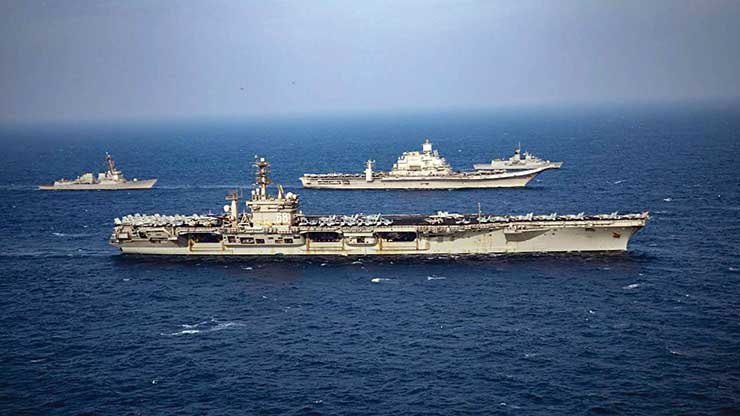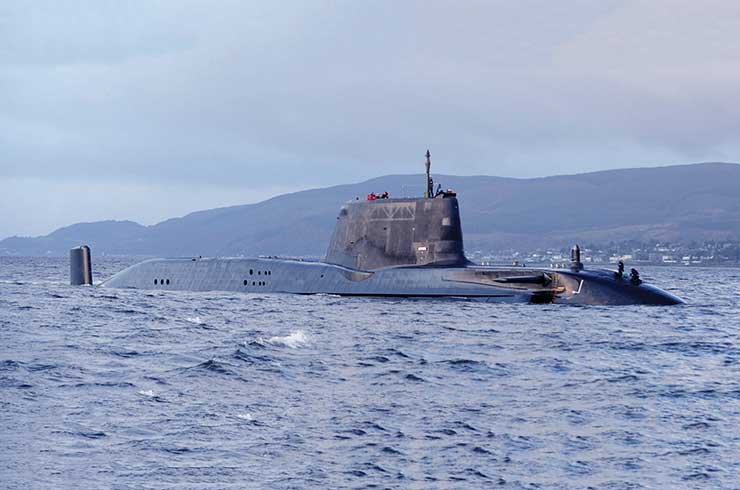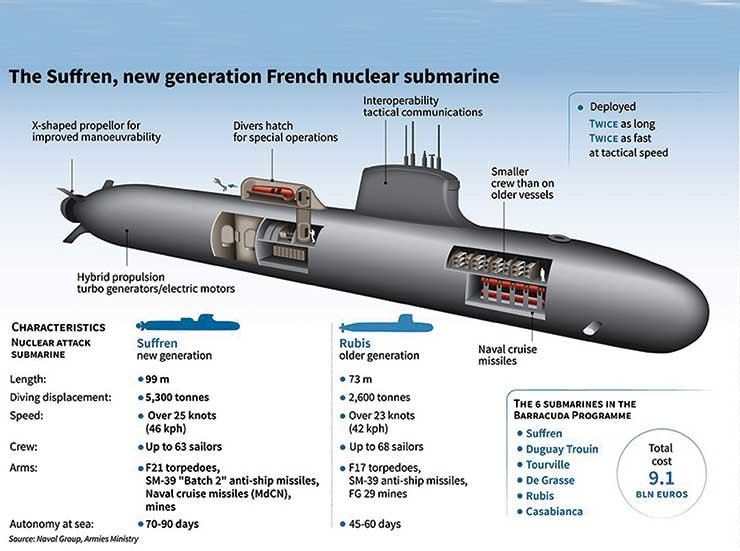
The need for security cooperation between Washington, New Delhi, Tokyo and Canberra was first mooted by former Japanese PM Shinzo Abe in 2007 after India had signed the civil nuclear deal and the 123-Agreement with the US in July 2005. Abe’s grouping got dubbed as the four-nation ‘Quadrilateral’ (QUAD) for its togetherness. QUAD remained a consultative grouping at the official and foreign ministers’ level till two years ago. During this period, India-US cooperation grew and India signed three foundational agreements namely the Logistics Exchange Memorandum of Agreement (LEMOA), COMCASA for secure communications and Basic Exchange Co-operation Agreement (BECA) for exchange of geospatial intelligence.
Since 1992 the Indian Navy has been seamlessly exercising with the US Navy in 26 high-pitched Malabar exercises employing Pentagon’s internet Combined Enterprise Regional Information Exchange System (CENTRIX) for the duration of the exercise with US Navy Sea Riders embarked on Indian Navy ships.
India became US’s preferred defence partner and procured $ 22 billion worth of military equipment, which has increased India’s ability to exercise with NATO forces with interoperability, as seen in the advanced Malabar, Konkan with the Royal Navy, and Garuda with the French Navy exercises.
On September 25 this year, a QUAD summit was scheduled by President Biden for the Prime Ministers of India Narendra Modi, Yoshide Suga of Japan and Scott Morrison of Australia in Washington. The outcome was looked forward to, as QUAD was ranged against China’s aggressiveness in the maritime domain.
India’s maritime geography and its small but potent Navy lends strategic advantage to the QUAD in the Indian Ocean Region (IOR), especially if India allows QUAD basing of ships, as PLA (Navy) has developed basing facilities at Djibouti, and has plans for basing at Gwadar in Pakistan, and Ormara where it is building Pakistan’s submarine base.
However, in a surprise move on September 15, ten days before the QUAD Summit, a tri-lateral security alliance comprising Australia, UK and USA with the acronym AUKUS was announced from Washington jointly by President Biden in a virtual ceremony.
AUKUS included a statement to provide nuclear technology to Australia by US and UK to acquire eight nuclear propelled SSN submarines which surprised most nations and made waves beyond the Indo-Pacific. China which had called the QUAD ‘a foam that will dissipate’, called AUKUS a ‘ganging up’ against it.
The Australia-US-UK pact means other countries’ will be free to pursue other areas of cooperation without worrying about the larger looming regional security challenge. Australia announced it would not be buying the eight French conventional submarines from Naval Group and cancelled the ongoing preparations by paying damages, as it had opted to get nuclear-powered submarines SSNs from the US and UK.
SSNs are quieter, stealthy submarines and do not need to surface, and can operate longer under water as long as provisions and human endurance lasts. France recalled its Ambassador from Washington in protest but later reconciled.

AUKUS has had an effect on nations to think of nuclear armament and proliferation as SSNs are game-changers. This is in adherence to the Theory of Revolution in Military Affairs (RMA), a well-accepted theory that was first articulated in the Soviet military in the 1970s by Marshal Nikolai Ogarkov who stated that the potential and possibility of invention of new weapons (aka SSNs) was rapidly increasing, and that revolution leads to the development of new doctrines of security that militaries must adapt to.
Nuclear-powered submarine technology is currently only held by five NPT nations though the Soviet Union loaned a Charlie class SSN INS Chakra (S71) to India for three years in 1987 and simultaneously transferred SSN-building technology to India’s Project Advanced Technology Vehicle (ATV) now called ‘Akashanka’ (Hope).
The Indian Navy and DRDO tweaked the SSN technology and design to build the 6,500-ton 89mw SSBNs christened INS Arihant and Arighat—which is on trials—and armed them with 750 km vertical launch nuclear missiles (K-15/BO-5).
The AUKUS agreement legally leverages the same loophole in the 1968 Non Proliferation Treaty (NPT) and the IAEA Statute, that India used as it permits Nuclear states to divert fissile material away from the IAEA inspection if it is used for ‘peaceful pursuits’, including submarine propulsion.
It was no surprise the QUAD summit that followed was held in a subdued atmosphere and a long joint statement was issued more on areas of cooperation in COVID, climate change and scholarships for students in QUAD, and only in the last paragraph QUAD pressed for freedom of navigation.
China was not specifically mentioned though it is China that has denied freedom of navigation as permitted by UNCLOS 1982 in the Taiwan Straits, and in the waters the Dragon has taken over in the Nine-Dash Line by converting rocks in the Parcels and Spratlys in the South Sea into artificial islands for larger EEZ and then armed military bases.
India must think SSNs in Navy’s ORBAT
AUKUS is evidently the result of America and China locking horns in what is being dubbed the Cold War 2.0, and possibly because India and Japan had reservations to convert QUAD into a US-led military alliance. The trilateral security AUKUS pact will goad countries to boost their own nuclear and nuclear submarine capabilities on the premise that if Australia can be equipped with more nuclear materials, can India be left far behind?
Such escalation by India could force China to similarly alter its ‘no-first-use nuclear weapons’ declaration. Analysts say only nuclear submarines with long ranges from Australia can deter China, not conventional submarines that drove the idea of AUKUS.

The AUKUS puts Japan and India in a quandary on their future role in the QUAD and India and US naval maritime cooperation that began in 1992 that may remain confined to bi-lateral Malabar exercises as Japan joined in 2015 and Australia in 2020.
India had hopes the QUAD could deter Chinese naval ambitions in the Indian Ocean Region (IOR), but will have to think of SSNs for its maritime security, dictated by RMA.
India’s Defence Acquisition Council (DAC) has sanctioned six SSNs to be acquired by the Indian Navy under Project 78A and this needs traction in preference to the RFP issued for six conventional submarines with Air Independent Propulsion (AIP) as the AUKUS which is termed a trilateral maritime security pact realigns the Indo-Pacific’s strategic security landscape and impacts South Asia’s conventional balance of power between India and Pakistan. Both are nuclear states. It will compel India to reassess its maritime nuclear doctrine as China has signed to supply Pakistan Navy SSN submarines in the coming decade and Pakistan is attempting to arm its submarines with nuclear missiles.
Pakistan Navy in a long term plan is modernising its naval warfare capabilities by acquiring Yuan Class Air Independent Propulsion (conventional) submarines which are under construction and China’s two Jiangwei-II F-22P and two Type 054A/P multi-purpose frigates, and Fast Attack Craft with C-602 Anti-Ship and FN-16 SHORADS surface-to-air missiles besides Z-9 helicopters.
India’s options for a SSN programme are three-fold. India could try to convert its Arihant programme into a ‘Atamnirbhar’ homemade one with underwater-launched Brahmos missiles that DRDO has tested and was Dr APJ Kalam’s dream, or seek an American offer of nuclear propulsion technology with highly enriched uranium (HEU), such as the one to be provided to Australia, though that would carry the conditions of an alliance or India could look to the offer from France’s Naval Group to build Baracuda class SSNs in India.

Media reported France’s President Emmanuel Macron dialed India’s PM Narendra Modi on September 21 to talk about strengthening cooperation in the Indo-Pacific and also boost, as Macron’s office said in a statement, India’s strategic autonomy.
Macron assured Modi of France’s continued “commitment to the strengthening of India’s strategic autonomy, including its industry and technology base, as part of a close relationship based on trust and mutual respect”.
It is speculated this could lead to a decision to cooperate in both military-technical and military-industrial matters related to Project-78A to procure six indigenously-built nuclear-powered attack submarines with France’s Direction Générale de L’Armement (DGA) with supply of the enriched uranium fuel for the India-built pressurised water reactors (of Russian design) for the entire service-lives of the six SSNs.
On the Indian side, the prime industrial beneficiary will be Larsen & Toubro (L&T), as it has built the Arihant and could be a win-win ‘Atamnirbhar’ project. The French Navy’s Barracuda-class 4,800-ton SSNs have a hybrid propulsion system that provides electric propulsion for economical cruise speeds and turbo-mechanical propulsion for higher speeds.
In addition, each of the SSNs are likely to incorporate a pump jet propulsion that combines a shrouded rotor and a stator within a duct to significantly reduce the level of radiated noise and avoid cavitation. The strategic choices are open to India.
–The writer is former DNO and DNI in the Indian Navy and runs a Maritime Museum and library at C-443, Defence Colony, New Delhi and writes on naval affairs. The views expressed are personal and do not necessarily reflect the views of Raksha Anirveda









